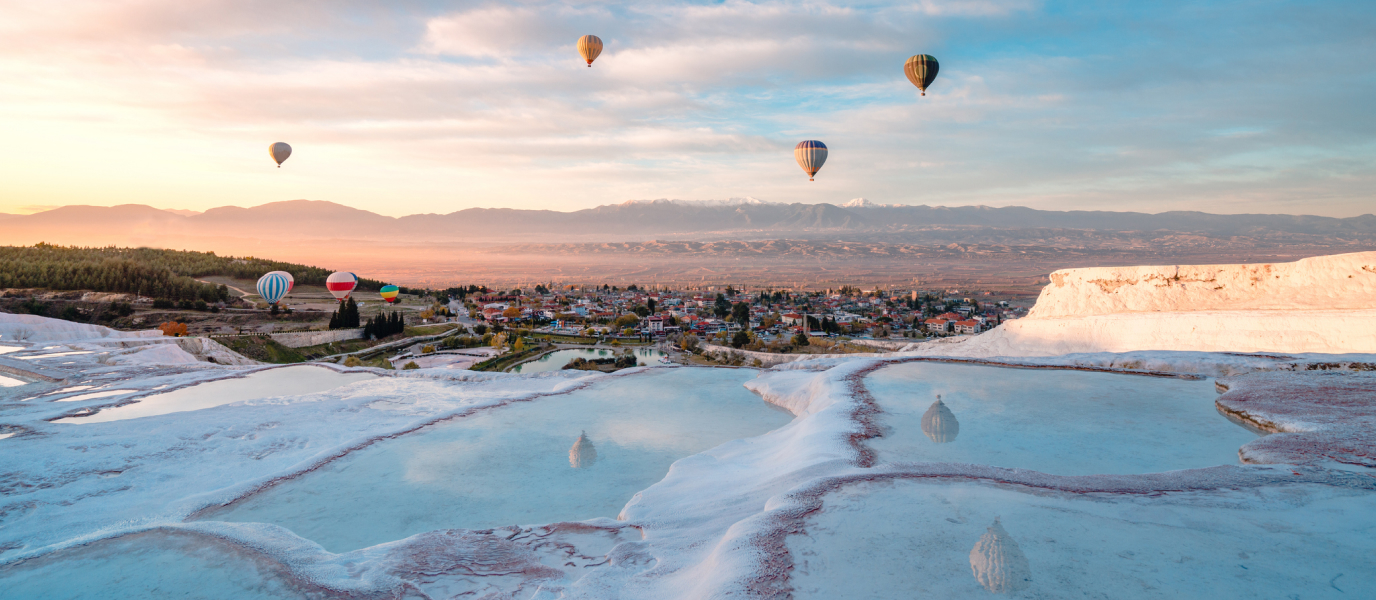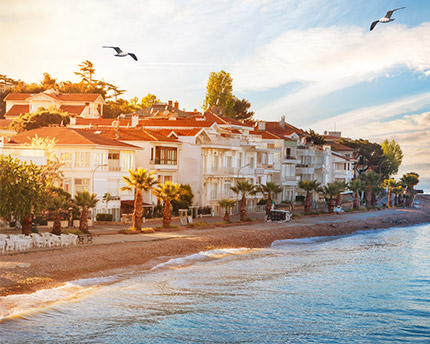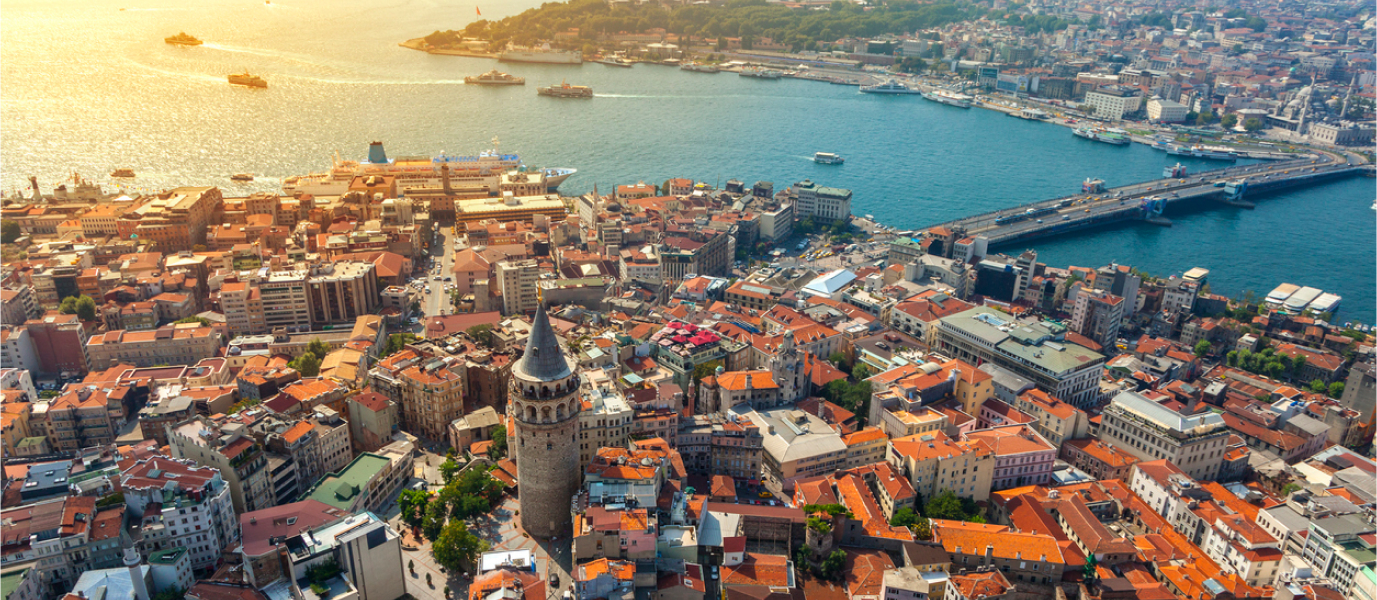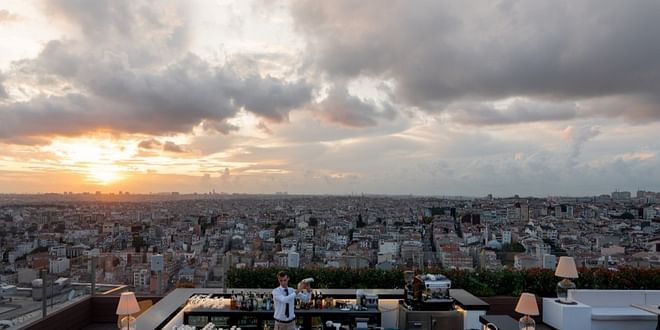Cappadocia permitting, Pamukkale is the main tourist attraction in the Anatolia region. It is a true wonderland, due partly to geology and partly to human activity, which attracts millions of visitors every year.
They are all drawn by its pure white natural pools, where the intense green emerald waters trickle down like an immense stone cascade, towards the lower valley.
It is below the city of Hierapolis which, during the Classical Age, had enormous splendour thanks to the thermal waters that sprang directly from the earth, with temperatures of between 35°C and 100°C.
Where is Pamukkale and how to get there
Pamukkale is in southwestern Turkey. Specifically, in Denizli province, in the River Menderes valley, just over 600 kilometres from Istanbul and around 475 from the country’s capital, Ankara.
The best way to get there is to book a tour package. Whoever wishes to go on their own by hiring a vehicle has to travel a long route from the Bosphorus of around 7-8 hours along winding and busy roads.
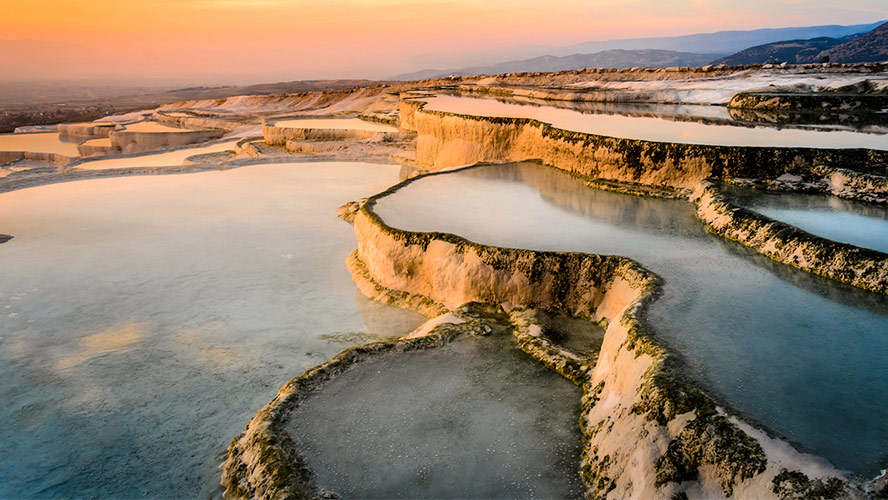
You can also travel by plane from Istanbul to Denizli airport, which is around 70 kilometres from Pamukkale (just under one hour away). Once there, you can hire a vehicle or take a taxi or bus (Bay Tur company) which connects the airport itself to this thermal and archaeological complex.
Things to see in Pamukkale
First of all, the most striking thing about Pamukkale are its travertines. In other words, the characteristic geological formations in cascade that have been created as a result of a build-up on the mountain embankment of the remains of calcium carbonate (chalk) dissolved in the thermal waters that emerge from the area.
Over millennia, this chalk sedimentation has created a spectacular geology, with stalactites and stalagmites and other stone formations, which usually takes place in underground calcite and gypsum caves but, in this case, it is above ground.
The water has accumulated in what is now known as the natural pools of Pamukkale. In other cases, the water disappeared, forming impressive white travertine stone terraces.
The formations which look like candy floss (cotton candy for our US friends) or marshmallows are also very characteristic at Pamukkale and they are the most photographed features in the area.
Nevertheless, this geological site is just as pleasing to the touch as to the eye. In fact, many visit Pamukkale to bathe in its thermal waters, which has different temperatures and mineral-medicinal properties.
Some visitors tend to rub their body with the mineral salts deposited at the bottom of the pools and around the area because of their alleged antirheumatic effects.
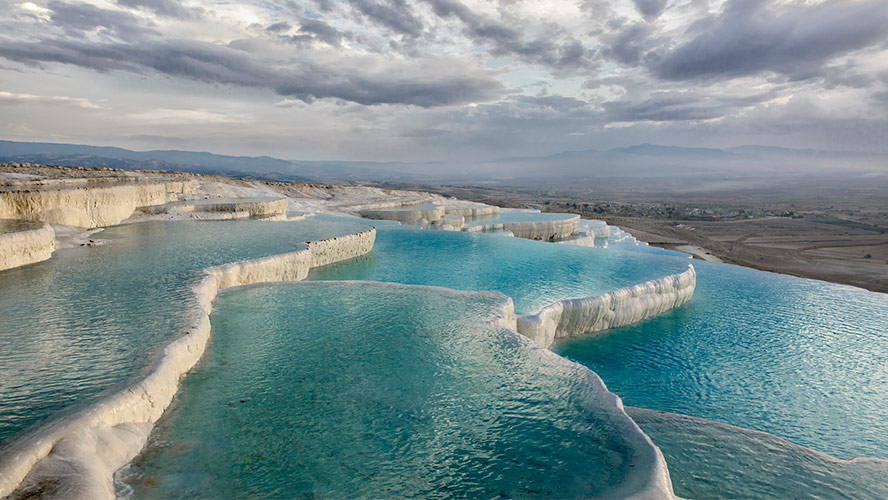
Hierapolis, a great city of the Ancient World
Ancient Hierapolis is located over the Pamukkale geological site. Both places are intimately connected with history. In fact, the Ancient Greeks founded this settlement here to take advantage of the medicinal benefits of the thermal waters.
King Eumenes II of Pergamon founded this city at the start of the 2nd century BC. Hierapolis was named after Hiera, Queen of the Amazons, according to Greek mythology.
Hierapolis was refounded under the Romans, which exploited it during the Empire period as one of the most desired holiday hotspots by its dignitaries. It continued this way until 1354, when it was destroyed by a large earthquake.
Fortunately, although it fell into oblivion for several centuries, the successive excavations have uncovered most of the city’s structure and its main buildings.
They include the following:
- Temple of Apollo: this was the largest temple in Ancient Hierapolis, built with large stone blocks without mortar. Many of its columns are still standing today.
- Amphitheatre: this is one of the most impressive (and rebuilt) places in the archaeological site. It was built in the 3rd century during the reign of Septimius Severus and had capacity for around 12,000 spectators.
- Roman baths: they were built in the 2nd century AD and you can admire the three main parts (frigidarium, caldarium and tepiderium) under the stuccoed vaulted ceilings which now house an interesting museum.
- Necropolis: there are three, located next to the various accesses to the site and provide good evidence (because of their size) of the importance of Hierapolis in the Ancient World.
- Monument and tomb of St Philip: it was built in the 5th century and supposedly keeps the remains of this saint, one of the apostles of Jesus of Nazareth, who came to evangelise the area and was martyred there.
- Cleopatra’s pool: the fact that this mythical queen of Egypt came to the area forms part of the legend. What is true, however, is that bathing in the pool’s waters will help you immediately connect with the Ancient World.
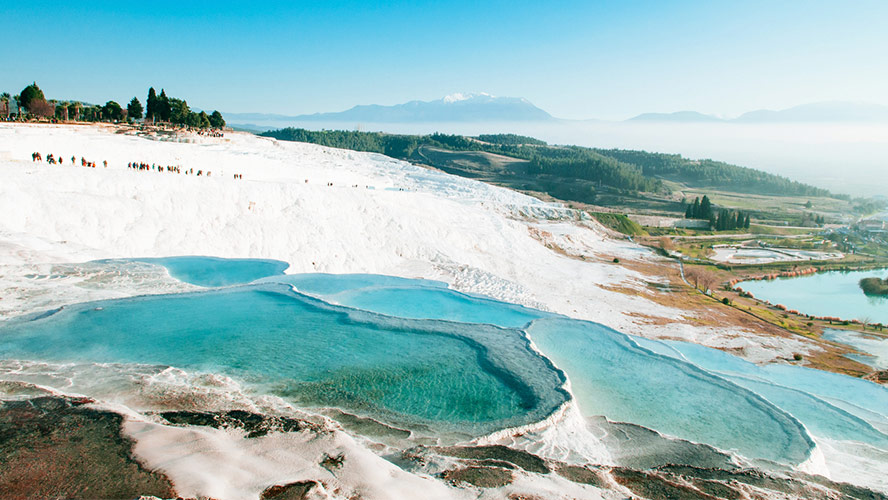
Pamukkale
Cotton castle and natural pools
The natural pools of Pamukkale are known as the Cotton Castle, which is what it literally means in Turkish. This is due to the obvious analogy between the look of the cotton plant flower and the geological travertine formations which characterise this site.
The first European travellers who visited the area, back in the 18th century, also knew Pamukkale as the Tomb Castle because there were so many tombs in the valley.
Most of the visitors bathe in the artificial pools as such which were created to cover an old road built in the 20th century.
At the end of the 20th century, coinciding with its declaration as a UNESCO World Heritage Site, certain restrictions were established to preserve the area.
This included the obligation to walk barefoot over most of the geological site. As a result, the natural pools of Pamukkale now shine in all their glory and clearly provide one of the most impressive sights in Turkey.





























































